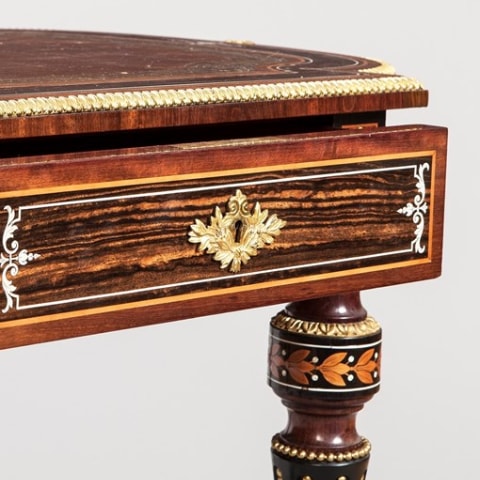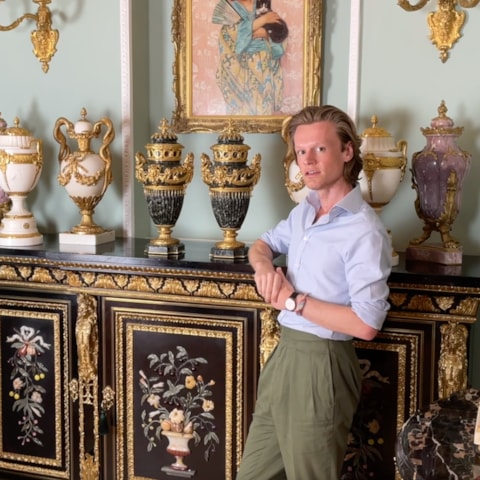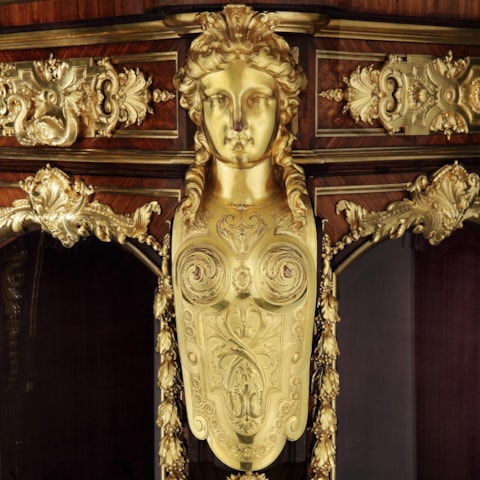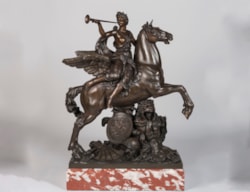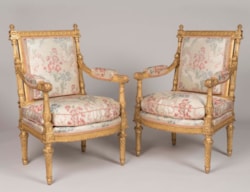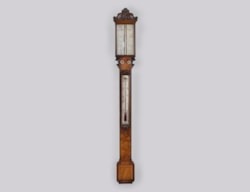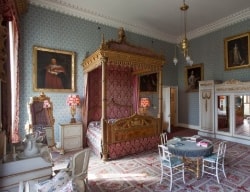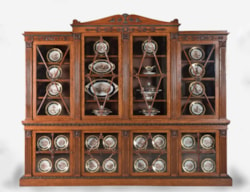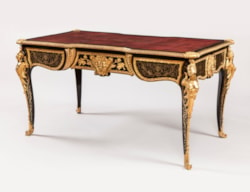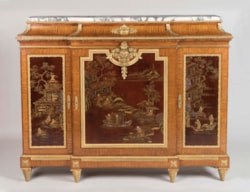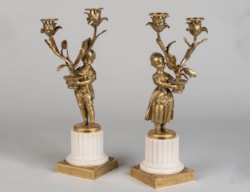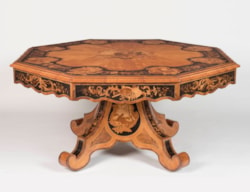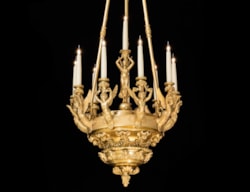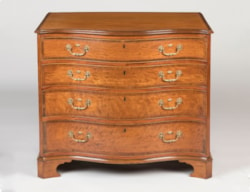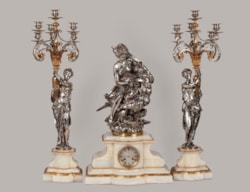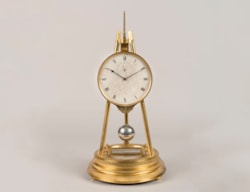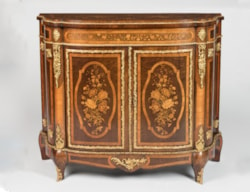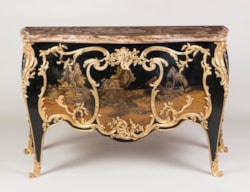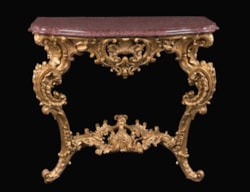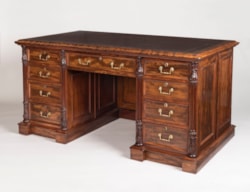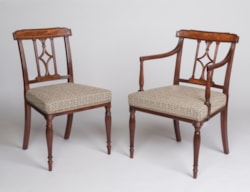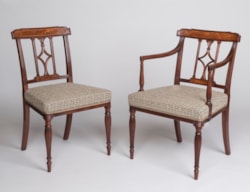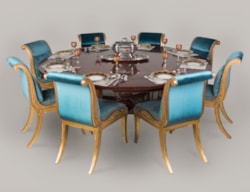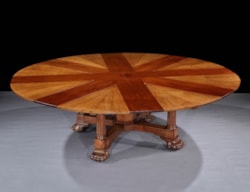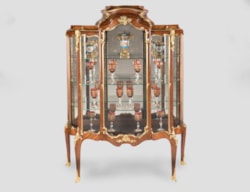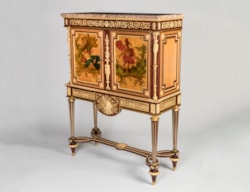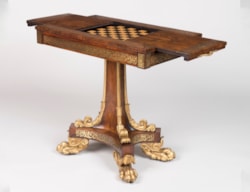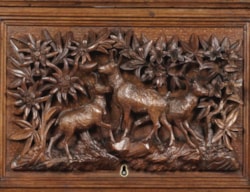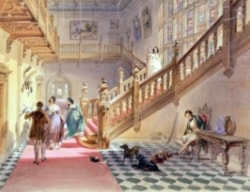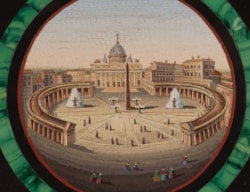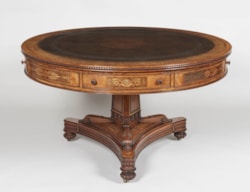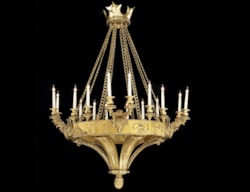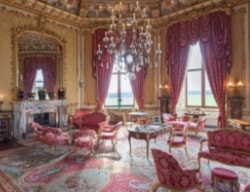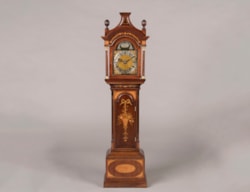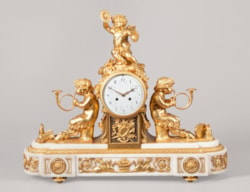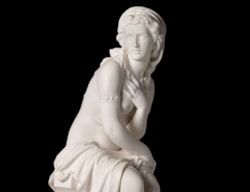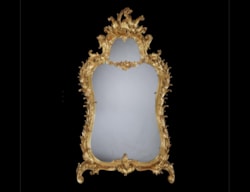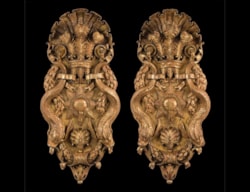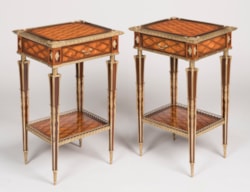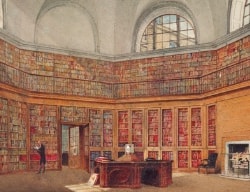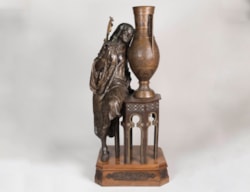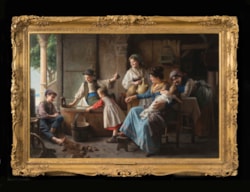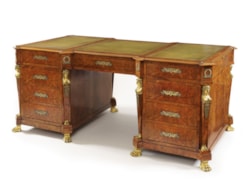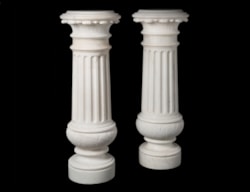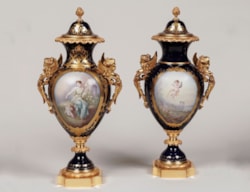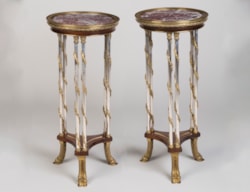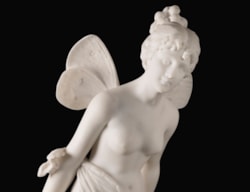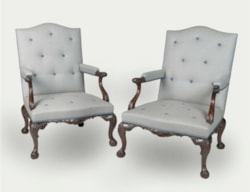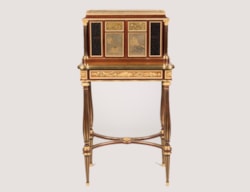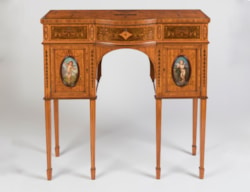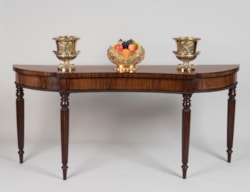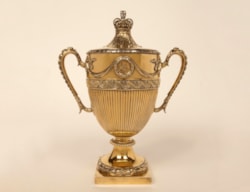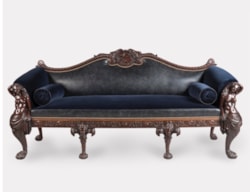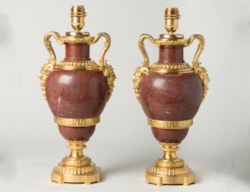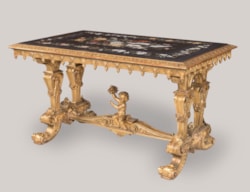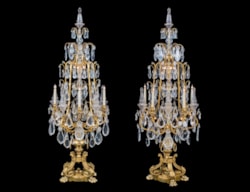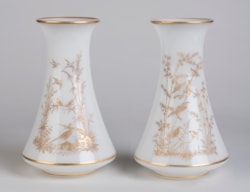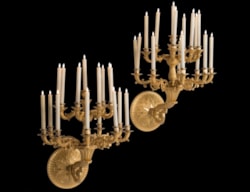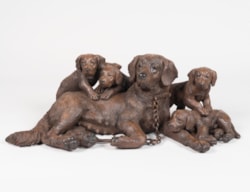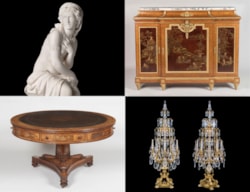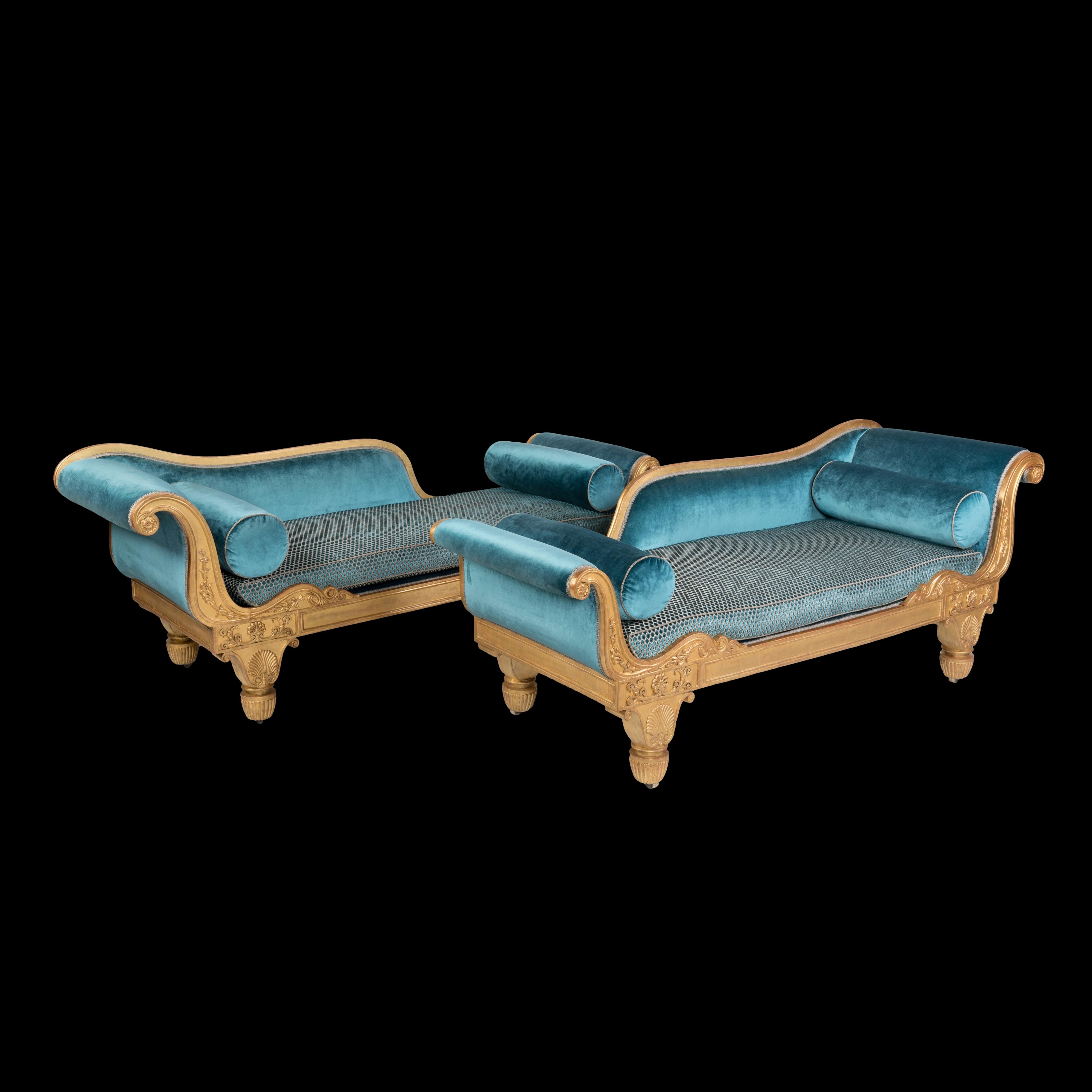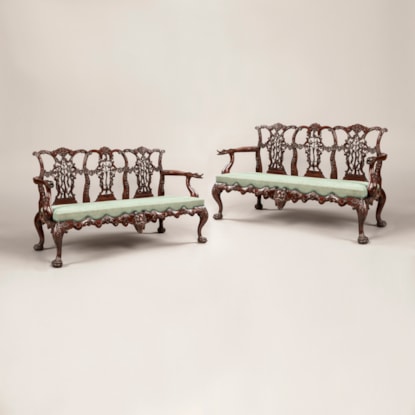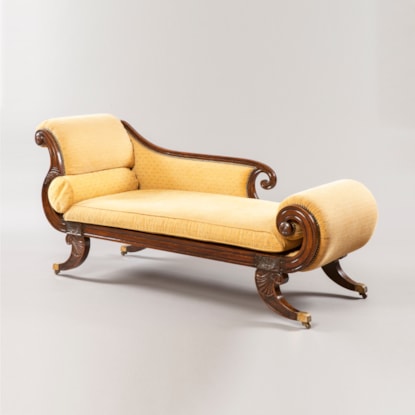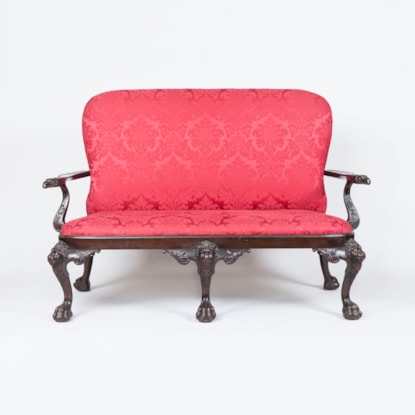Collection / Seating Furniture / Sofas & Settees
A Very Rare Pair of Giltwood Early Regency Chaises Longues
A Very Rare Pair of Giltwood Early Regency Chaises Longues
Dimensions: H: 31 in / 79 cm | W: 79.5 in / 202 cm | D: 23.5 in / 59 cm
A Very Rare Pair of Giltwood
Early Regency Chaises Longues
Attributed to Marsh & Tatham
The true pair of giltwood sofas in the Greek Revival style, with lobed bun feet on hidden casters, with serpentine backrests and scrolled arms, decorated throughout with foliate relief carvings including rosettes and anthemia. The original horsehair padded upholstery recently recovered.
English, circa 1810
A rare survival of the Greek Revival in England, only a small number of related commissions and designs have been documented.
The design is unmistakably related to Henry Holland’s furniture supplied to Southill and executed by Marsh & Tatham (Watson pl. 46). Indeed, the side profile of the Southill armchairs and their surface treatment are nearly identical to the seat rail and arms of the present chaises. Interestingly, a letter dated 1800 in the Southill archives mentions Marsh & Tatham as the employed cabinetmaker (Watson p. 38).
A small corpus of Marsh & Tatham’s Regency commissions is emerging in the scholarship, including a set of chairs supplied to George IV for his residence at Carlton House (Roberts illus fig. 55 on p. 74), as well as a set of four armchairs for Sir William Lee at Colworth House, later transferred to Hartwell (Jourdain p.18). Finally, a related suite of giltwood furniture is at Belton House, made for Lord Brownlow, though not explicitly linked to Marsh & Tatham and lacking the decorative relief carving.
MARSH & TATHAM
Marsh & Tatham was a prominent cabinet making and upholstery firm based in London, operating from 1774 to 1840 under various names. They were known as Marsh & Tatham from 1803 to 1811, emerging from a series of earlier partnerships involving William Marsh, George Elward, Edward Bailey, and Thomas Tatham. Throughout its existence, Marsh & Tatham maintained its premises at 13 Mount Street, Grosvenor Square, London.
The firm gained prominence as significant suppliers to the Prince of Wales, later George IV, providing furnishings for both Carlton House and Brighton Pavilion. Their royal patronage is evidenced by several notable commissions. In 1806, they supplied furniture and furnishings for Carlton House totalling £5,964 16s 6d, which included ebony and ivory veneered library furniture. That same year, they fulfilled another substantial order for Carlton House, amounting to £7,387 5s, which featured expensive cut-glass lustres.
Beyond their royal commissions, Marsh & Tatham's work for Southill was a significant project, spanning from 1796 to around 1807. Southill was the country estate of Samuel Whitbread II, a prominent brewer and politician of the time. This commission was important as it showcased the firm's ability to produce highly stylish pieces in the Anglo-French taste, which was fashionable at the time.
The style and designs of Marsh & Tatham were heavily influenced by Charles Heathcote Tatham, brother of Thomas Tatham and author of "Etchings of Ancient Ornamental Architecture" (1799). Their work ranged from pieces in the French taste to designs in the Grecian style, reflecting the evolving fashions of the period.
By 1808, insurance records suggest that William Marsh had retired, with Thomas Tatham and Edward Bailey taking over the business operations. Despite this change in leadership, the firm maintained its reputation for producing high-quality, fashionable furniture.
The Marsh & Tatham period represents a significant phase in the company's history, marked by prestigious royal patronage and the production of highly refined pieces. Even after 1811, when the firm underwent further name changes, it remained one of the most important cabinet-making businesses of the late 18th and early 19th centuries.
DESIGN SOURCES
A fascinating body of archival material relating to Henry Holland’s commissions--and the studies carried out by Charles Heathcote Tatham on his behalf--can be found in the archives of the Royal Institute of British Architects (RIBA), the Victoria & Albert Museum, and Sir John Soane’s Museum.
Of particular note are the architectural sketches by Holland at RIBA for Carlton House which include scrollwork studies very closely aligned to the treatment of this giltwood set. Done at the close of the 18th century, these designs for the Royal residence on Pall Mall incorporate a nearly identical S-scroll motif issuing a half-anthemion (RIBA84226-7). Interestingly, an ink drawing by Charles Heathcote Tatham at the V&A of an ‘antique console’ in Rome provides the original source for the motif later proposed for Carlton House (V&A D.1484-1898). C.H. Tatham was sent to Rome by Henry Holland to collect Classical fragments and execute drawings to be used as design sources. It is certainly no coincidence the furniture made for Holland-designed projects was the work of Marsh & Tatham, its co-founder Thomas Tatham being the brother of C.H. Tatham. This relationship between Henry Holland and Marsh & Tatham is documented not only at Carlton House, but also at Southill, Harewood House, and Colworth.
Literature:
Collard, Frances. Regency Furniture. Antique Collectors’ Club, 1985.
Jourdain, M, and Ralph Fastnedge. Regency Furniture 1795-1830. [4th ed.] ed., Country Life, 1965.
Roberts, Hugh. For the King’s Pleasure : The Furnishing and Decoration of George Iv’s Apartments at Windsor Castle. Royal Collection, 2001.
Watson, F.J.B. Southill, a Regency House. Faber and Faber, 1951.
You may also like

 Vip access
Vip access

 Favourites
Favourites






